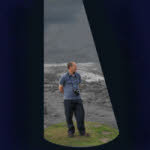Table of Contents:
1. Teachers background information.
The Trinity in the Bible becomes obvious in that God can be seen to consist of three persons; God the Father, God the Son Jesus, and God the Holy Spirit.
The Bible does not use the term ‘Trinity’ but all three are seen at work within its pages. In the New Testament passage here all three are present:
“and when Jesus also had been baptized and was praying the heavens were opened, and the Holy Spirit descended on him in bodily form, like a dove; and a voice came from heaven “You are my beloved Son; with you I am well pleased.”
Luke 3:21-22 ESV
The children will learn about this, and also about the role of the Holy Spirit now:
In the Old Testament God’s Spirit is mentioned in terms of coming upon God’s prophets, enabling them to speak his words.
In the New Testament the Holy Spirit is more available to everybody who believes and is within them, Jesus said:
“I will ask the Father [God], and he will give you another Helper to be with you forever, even the Spirit of truth, whom the world cannot receive, because it neither sees him nor knows him. You know him, for he dwells with you and will be in you.”
John 14:16-17 ESV
For teacher’s interest see: [1] Be Filled With The Spirit – Transforming But Nothing Added
2. Lesson plans and resources for the Trinity in the Bible and the Holy Spirit
The Trinity and Holy Spirit – lesson plan – New version coming soon due to changes in the RE syllabus.
3. Children’s song about the Trinity.
A catchy song about the Trinity.
Attention – by clicking ‘play’ your browser will load all of the Youtube Cookies.
Clicking ‘play’ means you are consenting to these Cookies.
4. How to fulfil the locally agreed syllabus for ‘The Trinity in the Bible and the Holy Spirit’
Hopefully, you will be able to match your local agreed syllabus with what is here which satisfies eight councils:
These lesson plans are based on the Progression Documents of The Agreed Syllabus for Religious Education’ Cambridgeshire, Northamptonshire, Peterborough, Rutland County Councils. This is in the light blue text.
The green text is from other Councils: Lewisham Borough, West Sussex, Hull and East Riding.
Here are the main aims of the lesson plan:
Christ and the Holy Spirit (Trinity)
Explore how Jesus is portrayed in art from different ages and cultures and how this can send a message about different beliefs relating to him.
Explore what Christians mean by/experience the Holy Spirit in their lives.
Explore New Testament teachings on living a Christian life e.g. “The Fruits of the Spirit” in Galatians 5 and I Corinthians 13 on love and consider their relevance for today’s world.
Explain and interpret how the history and culture of religions and worldviews influence individuals and communities today.
Show understanding of what is sacred for believers in religious places.
Compare key places of pilgrimage and identify why a faith member might go there.
How do believers worship?
Describe some different ways people communicate with their God.
Consider the meaning of different forms of religious worship and how they are expressions of belief.
Key vocabulary: Bible, Christ, Faith, God, Holy, Holy Spirit, Incarnation, Jesus, Miracle, New Testament, Old Testament, Pentecost, Prayer, Salvation, Trinity, Worship.
